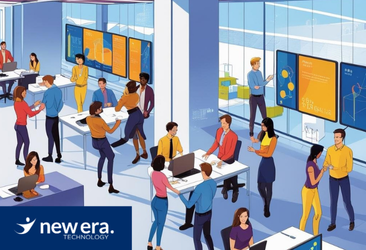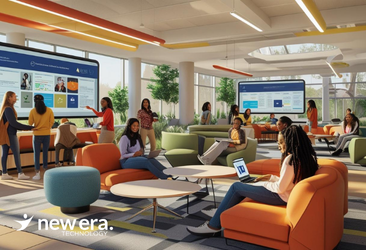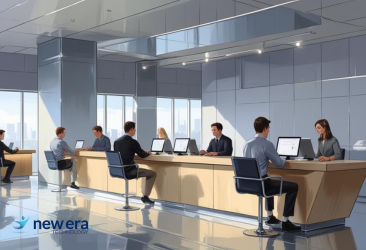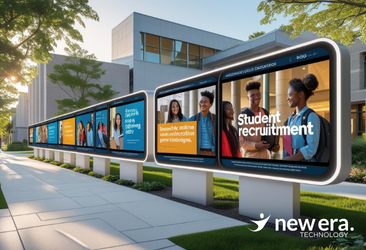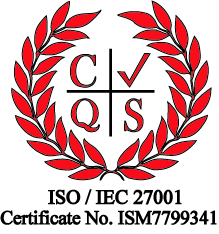5 Minutes Read
Video Collaboration is central to how organisations conduct their everyday business.
Looking back to pre-pandemic, video meetings had a very different meaning. They were usually used to facilitate one or two ‘remote’ participants joining a predominantly in-person meeting. It was fair to say that the opportunity for collaboration and the equity of experience was uneven and substandard.
Fast forward four years and with hybrid working here to stay, it is now the new normal for the majority of meeting participants to be remote. With an exciting acceleration in video collaboration technology, fueling the way rooms and spaces perform, the experience of ‘remote’ meetings has advanced beyond all expectations.
User-centric design
In today’s modern work world, organisations need to put the user at the heart of any video collaboration project. The hybrid workforce have high expectations on how their workspaces perform to ensure maximum productivity. Organisations now need to not only meet these expectations but also exceed them. They demand the same seamless experience in-office that they have at home, and are vocal when things going wrong.
Rationalise real estate
Throughout our global customer base, we have seen an increased pressure on organisations to rationalise their real estate. For many organisations this has resulted in a mass scale back on the real estate footprint, whilst ensuring that remaining office space maintains or increases productivity. Essentially they have to ‘do more with less’.
Can video collaboration really help entice people back to the offices?
Here at New Era, we are seeing the return to the office fuelled by two things; one is the pressure of ensuring their real estate investment is utilised, and second the experience they are providing needs to be one that encourages employees to return. But in order to make the ‘return to office’ a preferred choice for employees, businesses need to accommodate user expectations and make the office space they have left versatile and flexible.
It goes beyond technology choices; the focus needs to be on how effective and productive the spaces are. Do they facilitate the level of creativeness and engagement that organisations need now? It’s more than just person A being able to communicate with person B and C. It’s about them having the same equity of experience no matter where they are or what platform they are joining from.
How can you do more with less?
One trending request we are getting from our global customers is how to make one video enabled space ‘multi-use’. Can the same space be configured different ways to accommodate a variety of collaboration events – but without losing quality or negatively impacting the user experience?
For example, people want privacy for calls and meetings…but not all of the time. People no longer have fixed physical desks and will be allocated hot seats on arrival etc. The office is definitely changing and the world of VC/UC is helping to shape this.
What technology supports this type of multi-use collaboration space and how can you ensure you are making the best technology choices that will meet current needs for today and the future? The good news is that yes this can be achieved, and we have worked on some great projects comprising some of the latest technology from vendors to create immersive spaces that offer the flexibility and versatility that the hybrid world needs.
So what does this mean for organisations trying to ensure that the way they collaborate, results in maximum user adoption and experience? It all needs to start with design.
Start at the beginning
At the very start of any video collaboration project, we recommend that you complete a detailed assessment of the spaces and technology you have as well as gathering views from your user network as to what they want and need from these spaces. Engaging your workforce can ensure you build spaces that not only work for them but also provide a rich and engaging experience for them to thrive in.
Assess what technology you already have and what space do you have to develop. Gathering a detailed assessment of your current infrastructure means you can see what you already have and what you need, which can help level budgets and set objectives.
From here you can set your objective and define what you are trying to achieve. This should really be the foundation for any video collaboration project so you work to clear goals and can make decisions that work towards them.
Consider working with a service partner
Working with a vendor neutral service means you can benefit from tried and tested expertise and advice that will help speed up the design and deployment of your new spaces. Most service providers will facilitate the whole project from detailed assessment to the provision of 3D renderings and visual designs, which will help bring a project to life and help you make informed decisions.
How can we help?
Here at New Era we have extensive experience in building collaboration spaces that align technology devices with the aesthetics of your space. We make sure technology needs are met and integrated into the architectural design set, ensuring your end goal is achieved.
Our New Era collaboration experts will design your AV and collaboration estate with the right technology to enable your employees to perform to their best ability.
Contact us to start your Video Collaboration journey with New Era Technology.

 Australia
Australia Canada
Canada LATAM
LATAM New Zealand
New Zealand UAE
UAE United States
United States
